Christmas Cactus Vs Thanksgiving Cactus: The Different Types Of Holiday Cactus Explained
Learn how to identify Christmas, Thanksgiving, and Easter cactus plants, and understand their slightly different care needs.
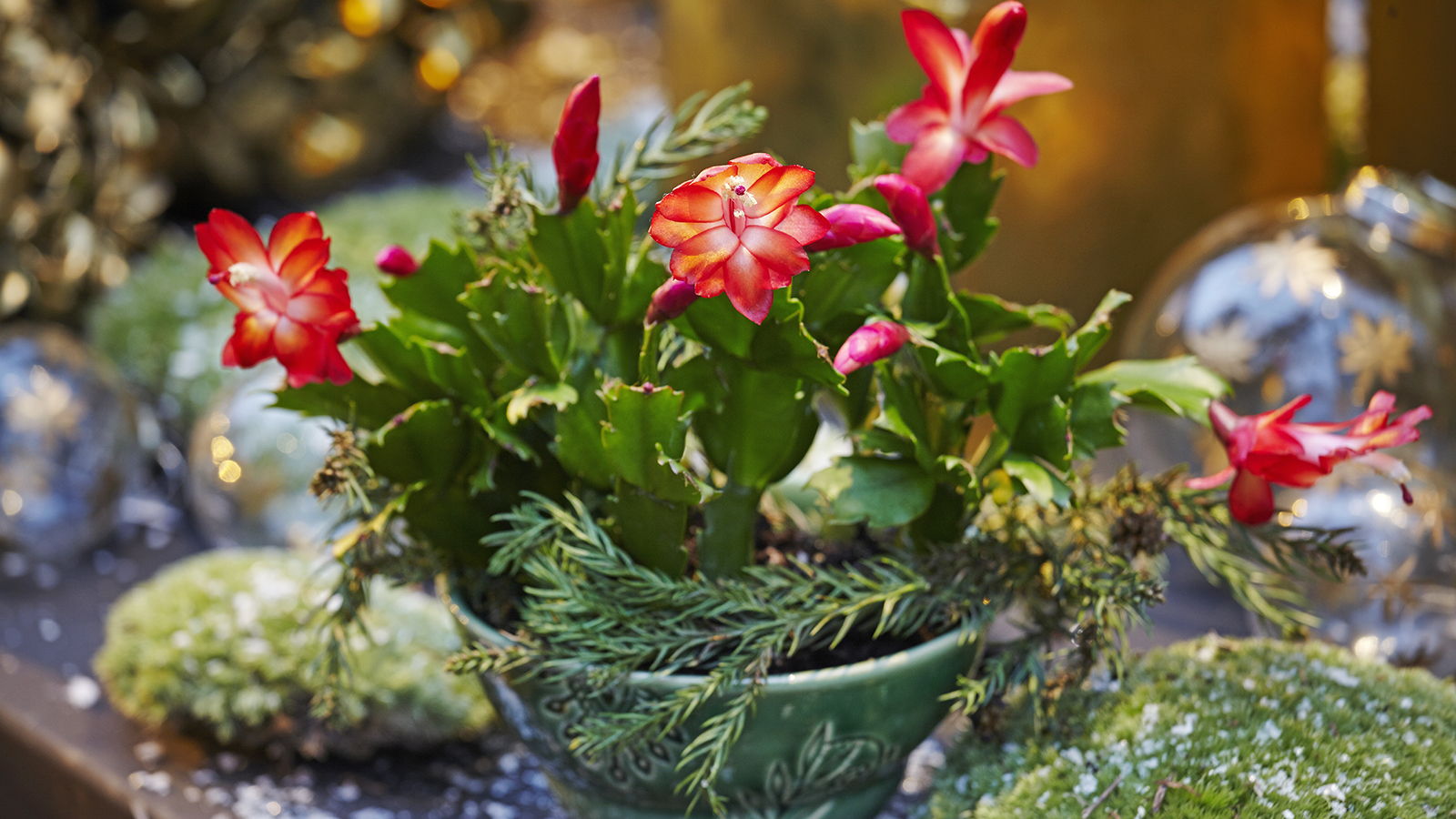

As the holiday season draws near, thoughts turn to filling our homes with vibrant plants that add life to the winter months. Among the most popular indoor plants for the season are the holiday cacti: Thanksgiving cactus, Christmas cactus, and Easter cactus. Each variety offers a delightful way to mark the seasons with brightly colored blooms and unique leaf patterns.
Despite often being mistaken for one another, these holiday plants are distinct varieties with different characteristics – the most notable one being their blooming times. This is what makes them ideal gifts for their namesake holidays.
If you aren't sure what type of holiday cactus you have, then the good news is that Christmas cactus care and Thanksgiving cactus care are fairly similar as the plants are low maintenance. However, Easter cactus care can be a little trickier as the species is more temperamental.
With a bit of know how, it's easy to tell them apart and tailor their care. Get it right and these stunning seasonal plants will reward you with blooms year after year, brightening your home and warming your heart through the festive season and beyond.
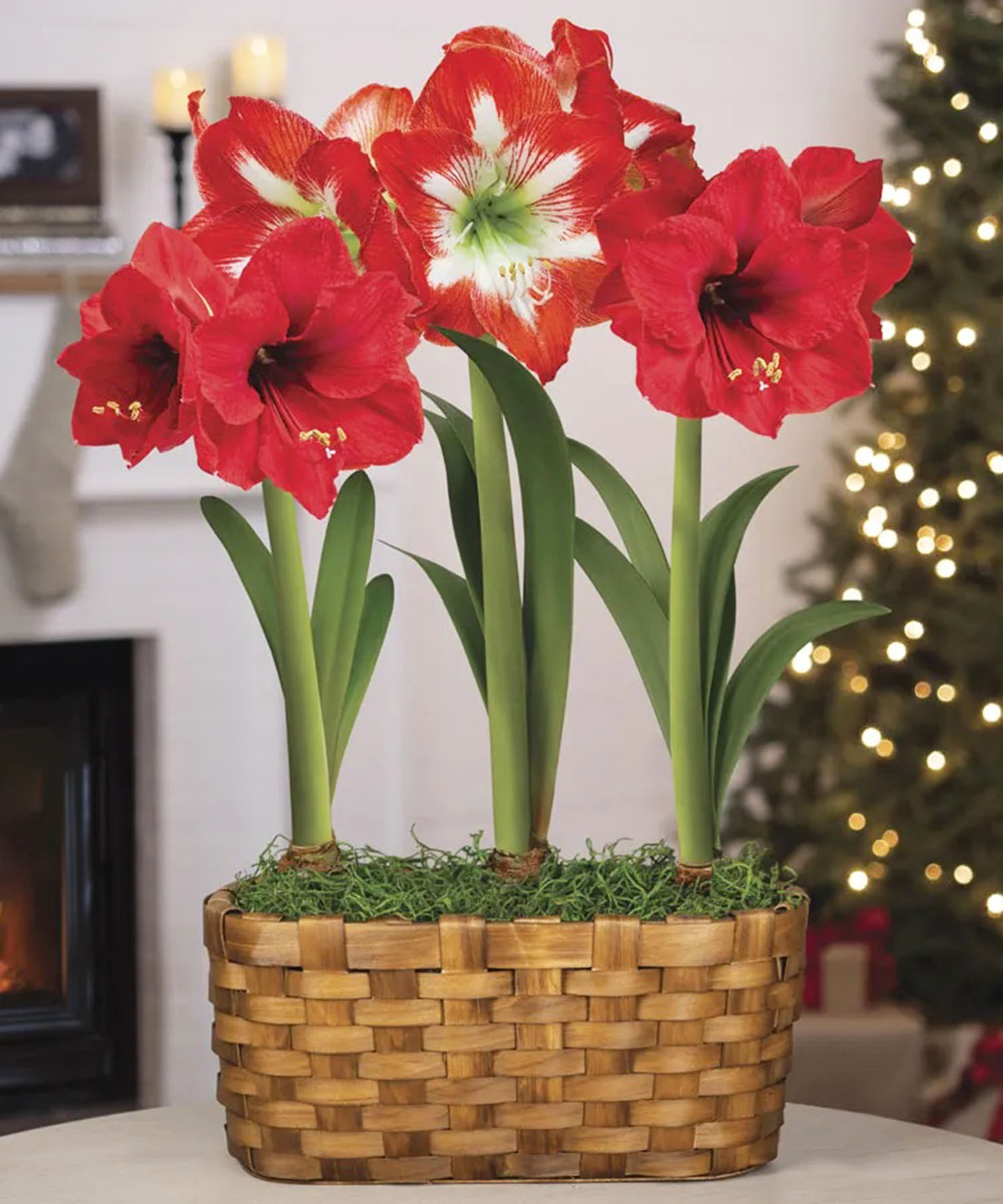
Browse beautiful plants, clever tools, and stylish accessories from tried-and-trusted gardening brands in the Gardening Know How Shop. There are options to delight the pickiest of gardening aficionados.
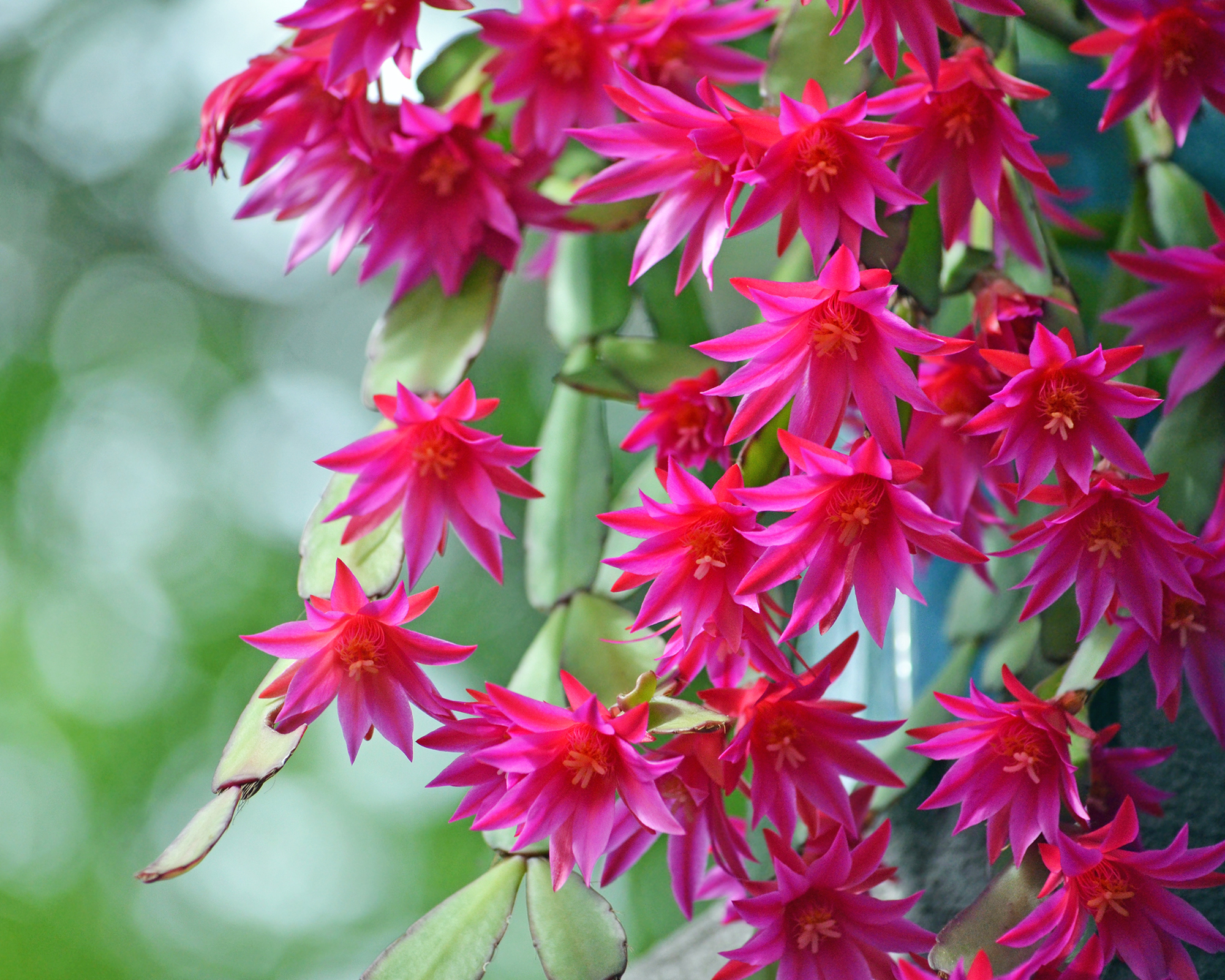
Differences Between Holiday Cactus Varieties
Broadly termed Zygocactus, holiday cacti are not desert cacti, but rather succulents native to the tropical rainforests of Brazil. They are epiphyte plants that in the wild live on other plants and derive their nutrients from the surrounding soil debris, air, and water.
Christmas cactus vs Thanksgiving cactus is the most common confusion surrounding different types of holiday cactus as their bloom times are close and both belong to the Schlumbergera genus. The Easter cactus is also native to Brazil but is a member of the Rhipsalidopsis genus.
While all three varieties can be differentiated by their bloom period and flower formation, the best way to identify them is to look at the shape of their leaf segments – or cladodes. These segmented cladodes are linked together to form the drooping, branching habit we’ve come to expect from this species.
Gardening tips, videos, info and more delivered right to your inbox!
Sign up for the Gardening Know How newsletter today and receive a free copy of our e-book "How to Grow Delicious Tomatoes".
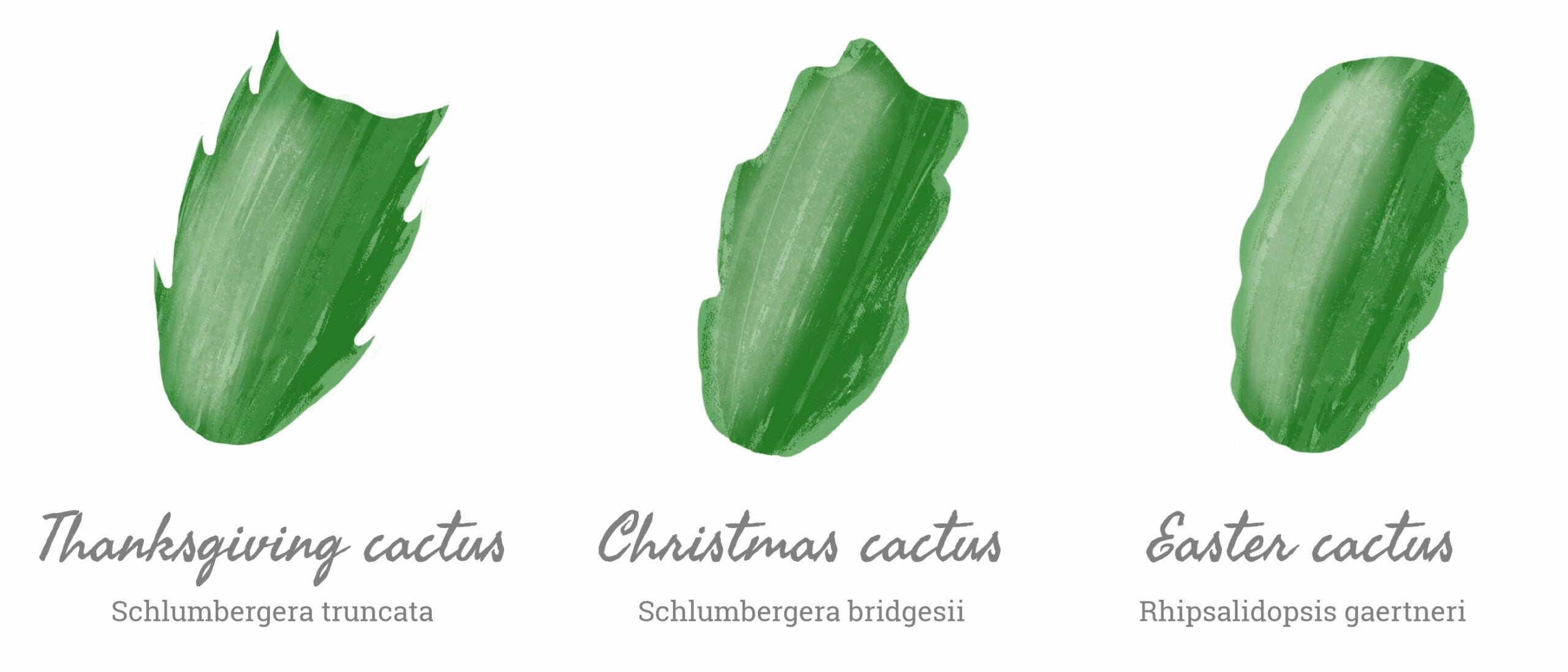
- Thanksgiving cactus has pointed, claw-like edges on segments.
- Christmas cactus has notched edges on segments that are smooth and rounded.
- Easter cactus has rounded edges with tiny bristles at the joints.
However, there are other differences that make these seasonal plants stand out from one another.
Thanksgiving Cactus

The Thanksgiving cactus (Schlumbergera truncata) typically blooms from mid-November to late December, aligning with the Thanksgiving holiday. It is often found in stores labeled as a “Christmas cactus” due to its similar appearance, but its pointed segments and earlier blooming time make it unique
Featuring jagged, toothed edges on its flattened stems, or segments, the Thanksgiving cactus also has stunning blooms in pink, red, or white, that grow horizontal to the stems. They have a more tubular shape compared to the other varieties and possess yellow anthers.
The Thanksgiving cactus is slightly more resilient than the other holiday cactus varieties, making it a great choice for indoor settings and table centerpieces.
Christmas Cactus
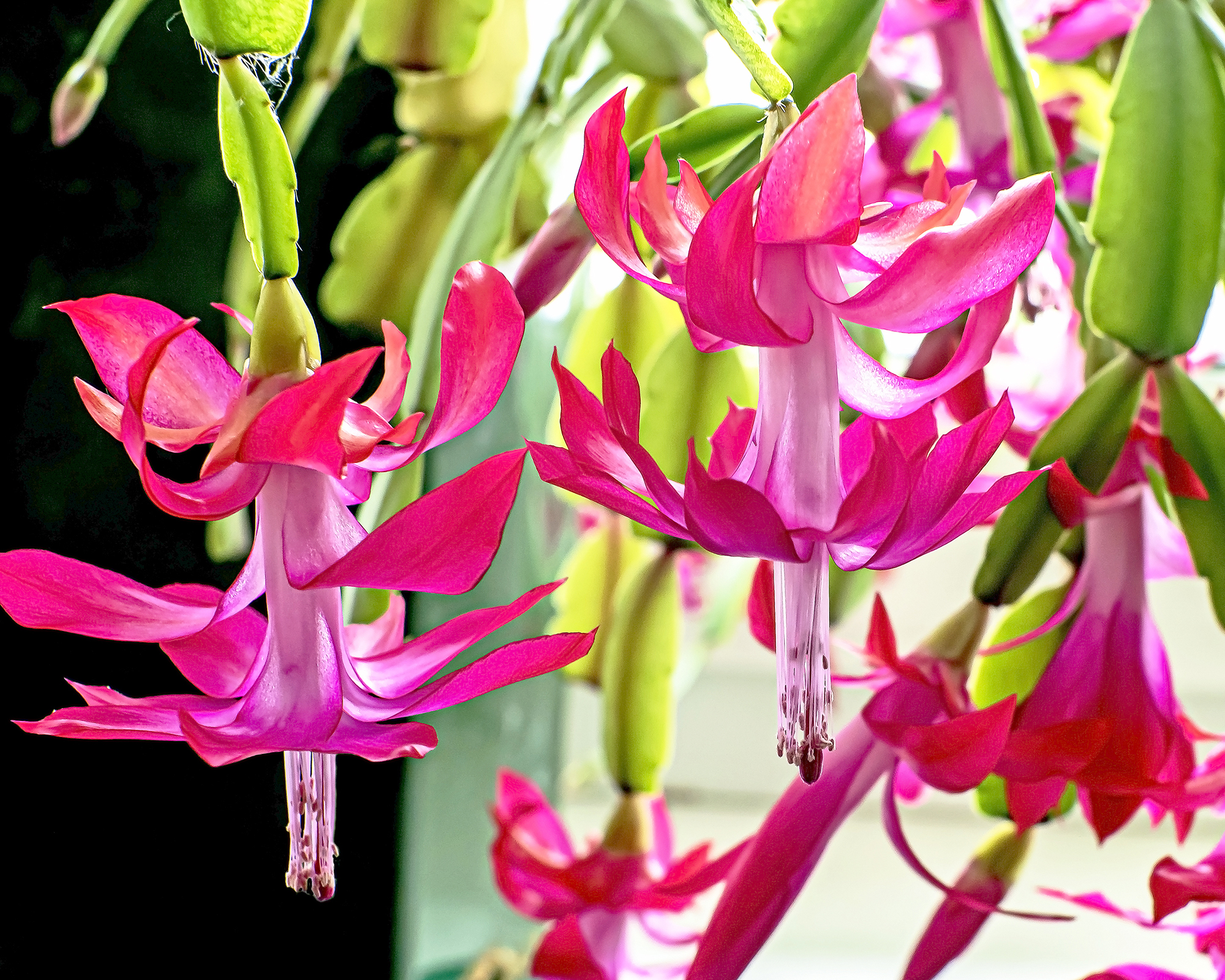
The Christmas cactus (Schlumbergera x buckleyi), with its gracefully drooping, rounded-edged segments, blooms later than its Thanksgiving counterpart, typically from mid-December through January. These delicate flowers almost always come in pink and have purple-brown anthers.
Unlike the Thanksgiving cactus, the segments of the Christmas cactus are rounded and smooth, giving it a softer, more classic succulent appearance.
Christmas cacti are highly popular for their ease of care and striking blooms, making them a favorite for holiday decor or as a unique host or hostess gift idea. They thrive in slightly cooler indoor temperatures, which can help to prolong their bloom period, making them a lovely choice for holiday arrangements.
Easter Cactus
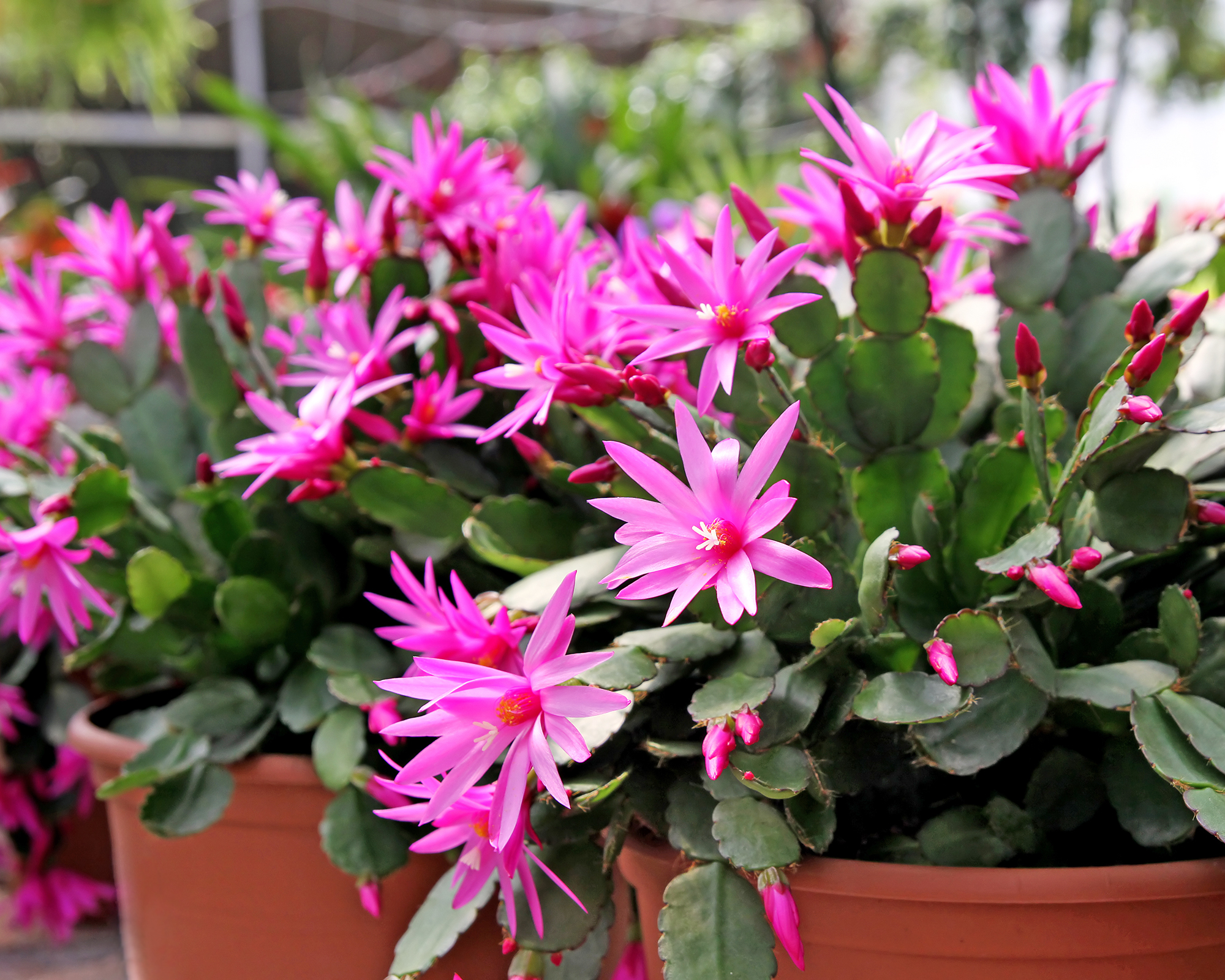
The Easter cactus (Rhipsalidopsis gaertneri), or spring cactus, blooms later than both Thanksgiving and Christmas cacti, often producing flowers from March through May.
It has smooth, rounded leaf edges with no notches and fibrous stems. However, the Easter cactus' main attraction is its distinctive star-shaped flowers, which come in a variety of colors, including pink, red, and lavender. These beautiful blooms tend to open fully in the daylight and close at night.
Easter cacti are less commonly available during the winter months, as their blooming period aligns with spring, but their soft-hued flowers make them a refreshing sight when the winter cacti are out of season. Unlike the other holiday cacti, the Easter cactus prefers more humidity and moderate light levels.
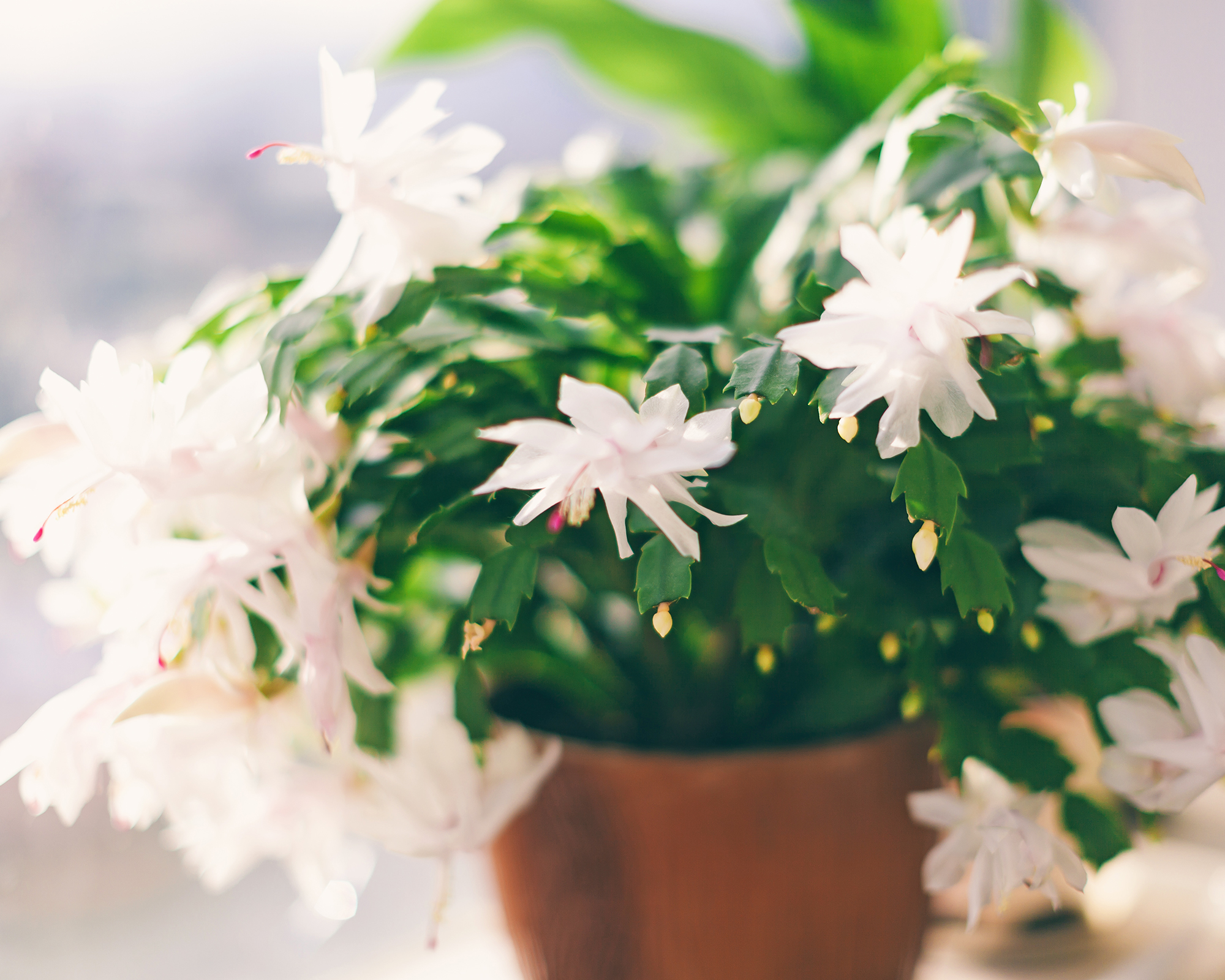
Holiday Cacti Care Tips
Holiday cacti are relatively easy to care for, but understanding their needs can help ensure they thrive and bloom beautifully each year. Here are some essential care tips to keep your Thanksgiving, Christmas, or Easter cactus healthy and flowering:
- Light Holiday cacti prefer bright, indirect light. Direct sunlight, especially during warmer months, can burn their leaves. Place them in a spot that gets plenty of natural light without direct exposure, such as near a north or east-facing window.
- Temperature These plants thrive in cooler temperatures between 60-70°F (15-21°C) during the day and around 55°F (13°C) at night. Exposure to cool temperatures before the blooming season encourages bud formation. The ideal Thanksgiving and Christmas cactus temperature should be slightly cooler at night during fall to stimulate blooming.
- Watering Unlike desert cacti, holiday cacti are native to humid forests and require consistent moisture. Water thoroughly when the top inch of soil feels dry, but avoid letting the plant sit in water. Water less frequently in fall to encourage flowering, then resume regular watering once buds appear.
- Humidity Holiday cacti benefit from higher humidity levels, especially Easter cacti. If your home is dry, consider misting your plants occasionally or placing a tray of water nearby to raise humidity.
- Soil for Christmas cactus and other varieties should be well-draining. Choose a potting mix formulated for succulents or cacti, with added organic matter to retain moisture.
- Fertilize monthly with a balanced, water-soluble fertilizer during the growing season, typically from spring to early fall. Christmas cactus fertilizer needs are reduced in late fall as they prepare for their bloom cycle. Stop feeding holiday cacti around this time.
- Repotting Christmas cactus and Thanksgiving cactus plants is necessary every 2-3 years, ideally after blooming. This keeps their roots healthy and allows the plant to grow, though they do prefer to be slightly root-bound.
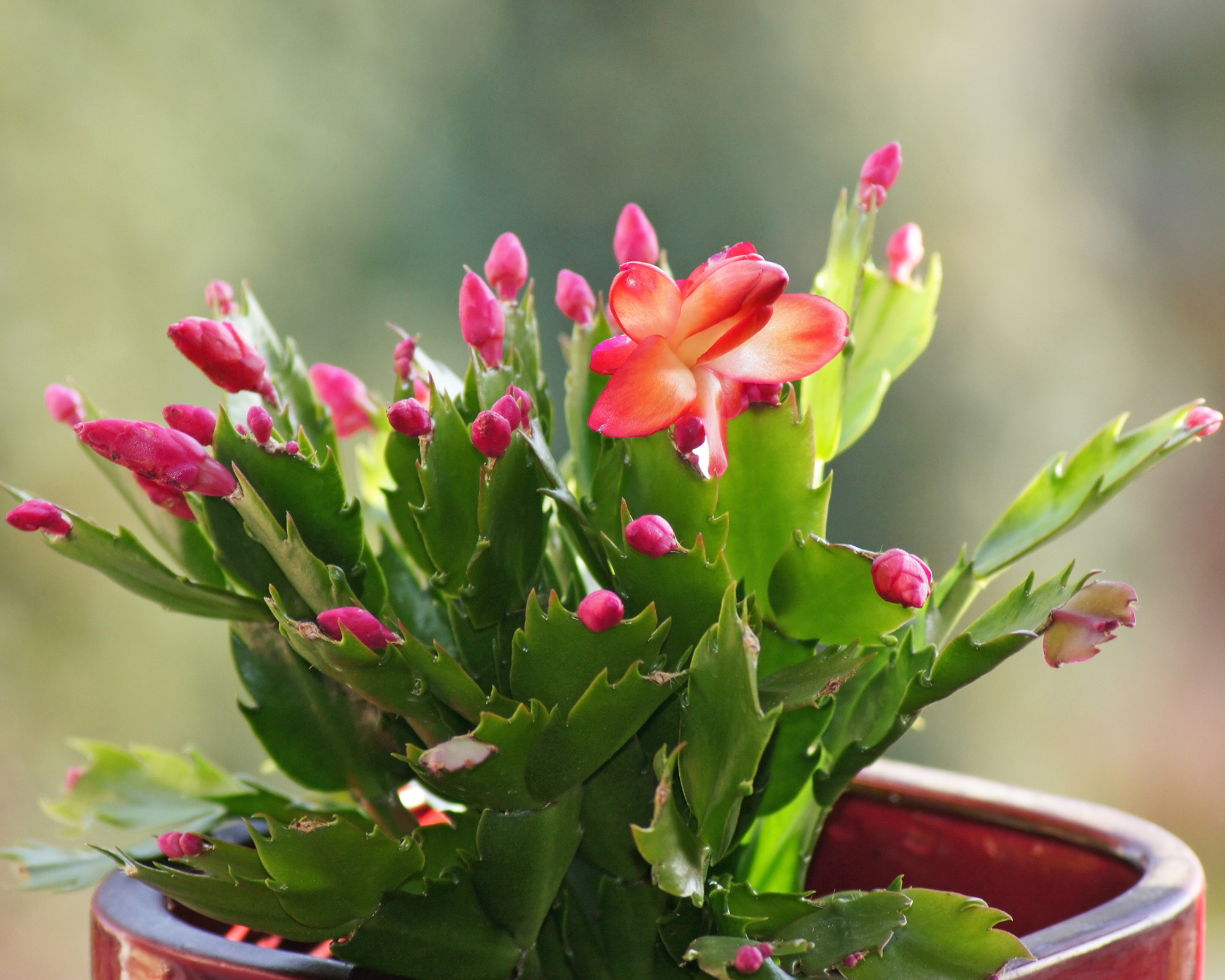
Encouraging Blooms
Encouraging holiday cacti to bloom on schedule can require a bit of timing and care. All three types of cacti are termed short-day plants, which means they need 12-14 hours of uninterrupted dark, cool conditions to encourage blooming.
Thanksgiving and Christmas cacti require around 6 weeks of short days to encourage flowering while Easter cacti need 8-12 weeks of short days to facilitate blooming; right around the Easter holiday.
Reduce watering in the fall, and keep the plant in a cooler area that is not artificially lit in the evening. This will help mimic their natural blooming cycle and trigger bud development.
Both Christmas and Thanksgiving cacti may rebloom a second time in the spring although not quite as vigorously.
The process can be repeated year after year to ensure holiday blossoming. In fact, since Christmas and Thanksgiving cacti can live for up to a century, some holiday cacti become treasured heirlooms, passed down from generation to generation.

Melanie is an experienced gardener and has worked in homes and gardens media for over 20 years. She previously served as Editor on Period Living magazine, and worked for Homes & Gardens, Gardening Etc, Real Homes, and Homebuilding & Renovating. Melanie has spent the last few years transforming her own garden, which is constantly evolving as a work in progress. She is also a passionate organic home grower, having experimented with almost every type of vegetable at some point. In her home, Melanie tends to an extensive houseplant collection and is particularly fond of orchids.
- Amy GrantWriter
- Bonnie L. GrantWriter
- Amy DraissDigital Community Manager
-
 8 Noteworthy Native Azaleas Every Gardener Should Know – And Grow!
8 Noteworthy Native Azaleas Every Gardener Should Know – And Grow!Native azaleas offer brilliant blooms in a range of colors and sizes. Here are a few favorites to get inspired and start working on a native shade garden!
-
 Growing Climbing Roses: How To Create Elegant Displays With Maximum Blooms
Growing Climbing Roses: How To Create Elegant Displays With Maximum BloomsMaster the art of growing stunning climbing roses with this essential guide to creating vibrant, fragrant walls and structures all summer long.
-
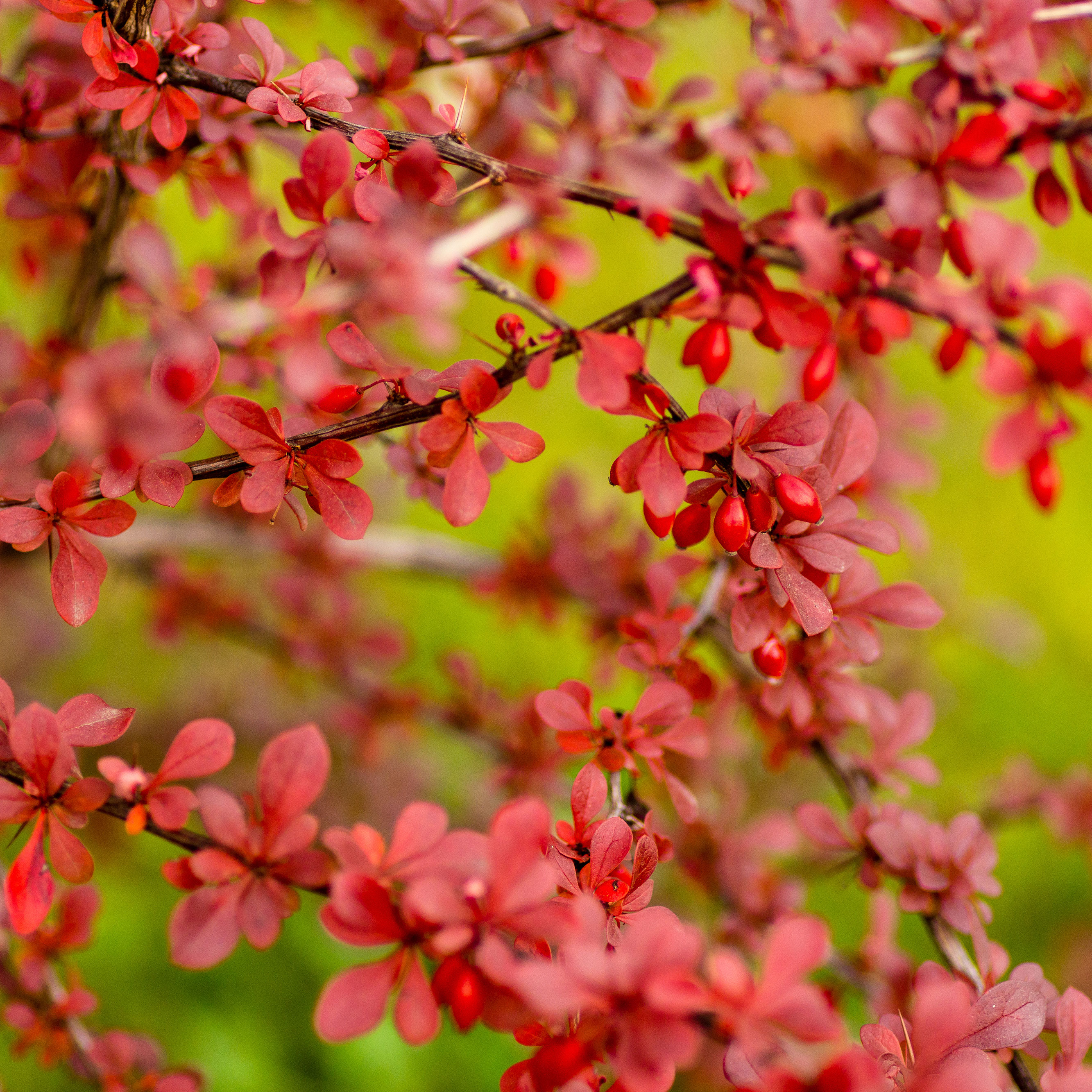 Which Invasive Shrubs Should You Avoid Growing? Plus, Best Natives To Plant Instead
Which Invasive Shrubs Should You Avoid Growing? Plus, Best Natives To Plant InsteadCertain plants may look lovely but they can wreak havoc to local areas and native wildlife. Here are the key invasive shrubs to avoid – with recommendations on gorgeous native alternatives to try
-
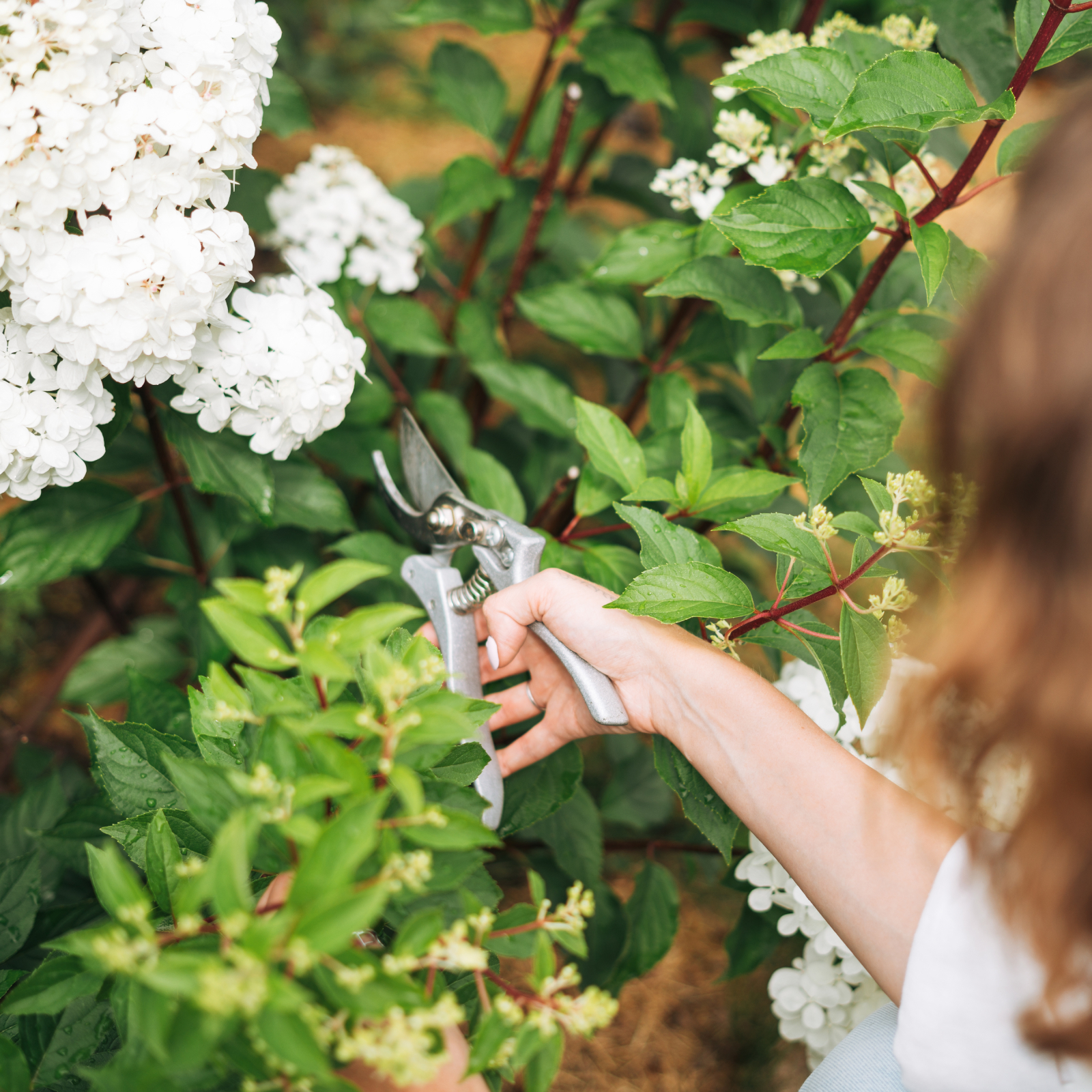 Pruning Limelight Hydrangea Bushes For Bigger Blooms & Stronger Plants
Pruning Limelight Hydrangea Bushes For Bigger Blooms & Stronger PlantsPruning 'Limelight' hydrangea will benefit the shrub. Flowers will be more bountiful the next year and branches will be stronger. Learn how and when to prune.
-
 What’s Wrong With Your Azaleas? Identify, Tackle And Prevent 6 Common Azalea Pests
What’s Wrong With Your Azaleas? Identify, Tackle And Prevent 6 Common Azalea PestsIf you’ve spotted signs of azalea leaf damage, don’t panic – here’s how to identify the most common azalea pests so you can take action swiftly and keep plants healthy
-
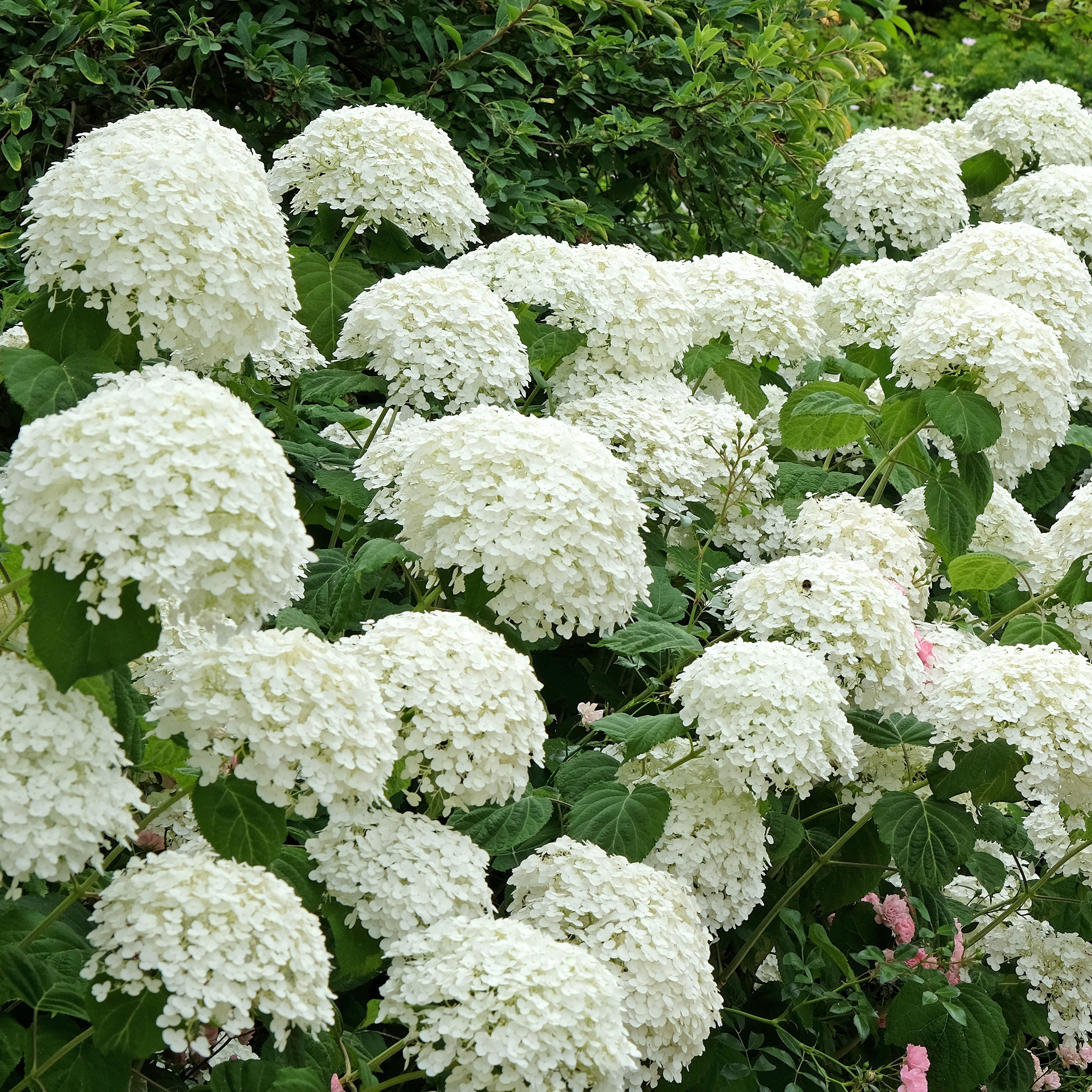 Native Hydrangea Varieties In North America – 8 Sensational Smooth And Oakleaf Varieties For Hardy Blooms And Multi-Season Beauty
Native Hydrangea Varieties In North America – 8 Sensational Smooth And Oakleaf Varieties For Hardy Blooms And Multi-Season BeautyHydrangeas are beloved for their enduring visual dynamics – but if you go native, they’re even better. Here are the most captivating native hydrangea varieties you can grow
-
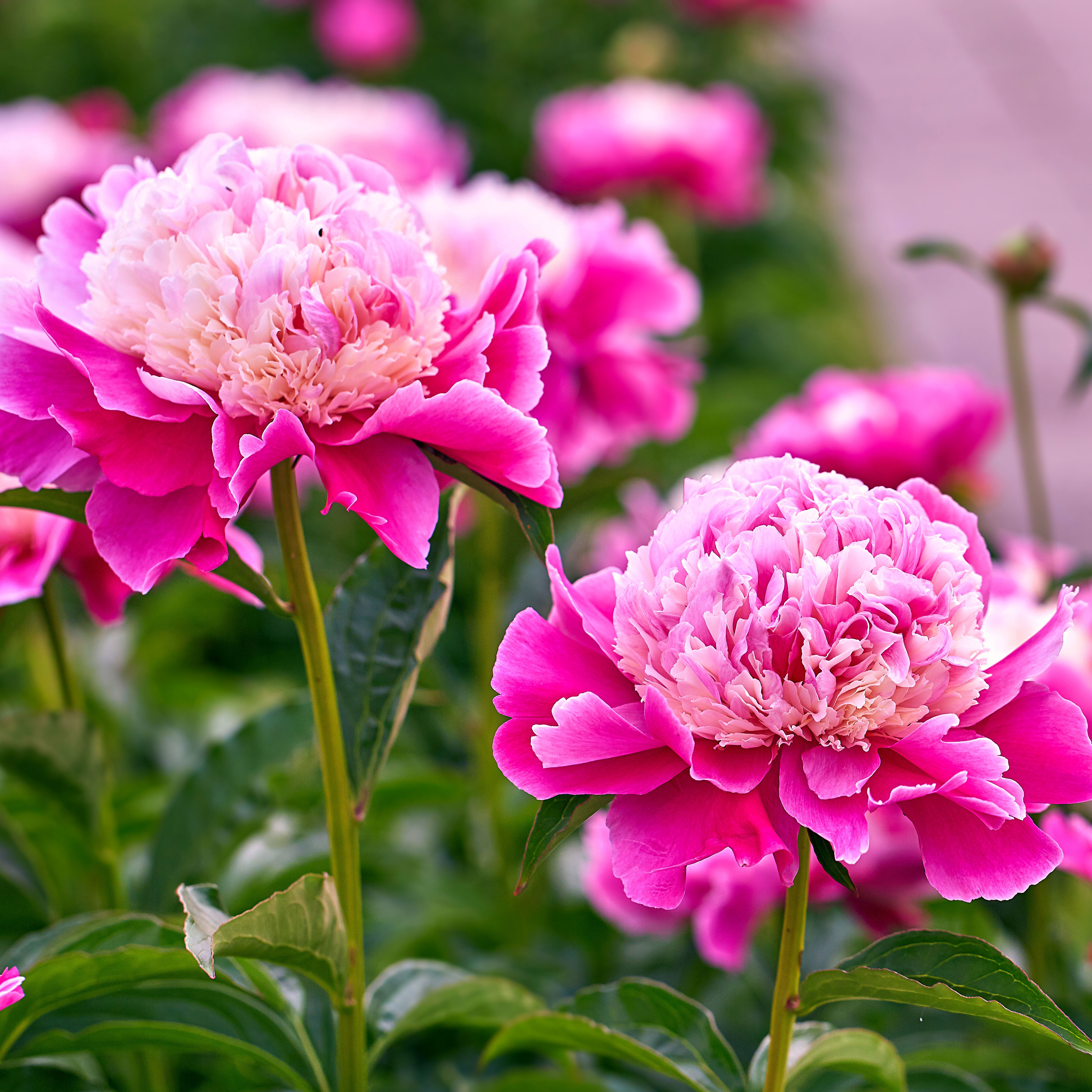 Grow These 8 Pretty Peony Colors To Include In Your Garden For A Spectacular Spring Rainbow
Grow These 8 Pretty Peony Colors To Include In Your Garden For A Spectacular Spring RainbowThere are as many shades of peony as there are types of garden – each more gorgeous than the last. Discover some of the most exhilarating peony colors for your yard
-
 Grow ‘Karl Rosenfield’ Peony Plants For The Ultimate Frilly Border Beauties And Cut Flowers
Grow ‘Karl Rosenfield’ Peony Plants For The Ultimate Frilly Border Beauties And Cut FlowersFor frilly double magenta peony petals infused with a heady fragrance, grow ‘Karl Rosenfield’ peony plants. Here’s how to cultivate the ultimate plushy blooms
-
 ‘Coral Charm’ Peony Care For Sublime Semi-Double Peonies With Lush Salmon Pink Flowers
‘Coral Charm’ Peony Care For Sublime Semi-Double Peonies With Lush Salmon Pink FlowersPeonies are known for their soft baby pink or magenta tones, but if plushy coral blooms are your thing, here’s our guide to the ultimate ‘Coral Charm’ peony care
-
 Want The Longest Lasting Hydrangea Flowers? Grow These 8 Panicle Hydrangea Varieties
Want The Longest Lasting Hydrangea Flowers? Grow These 8 Panicle Hydrangea VarietiesFor ornamental shrubs that deliver the longest flowering seasons with plush blooms and delicate hues, these panicle hydrangea varieties are essential in your yard